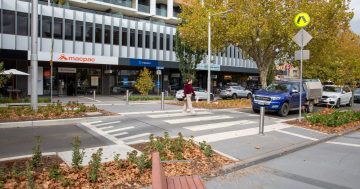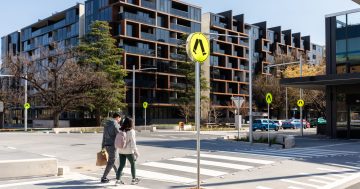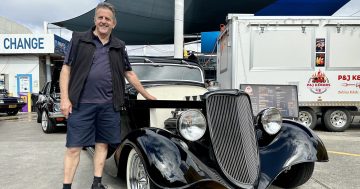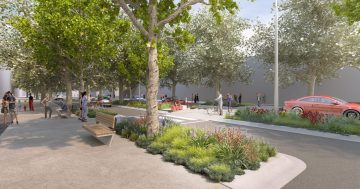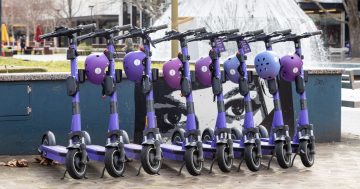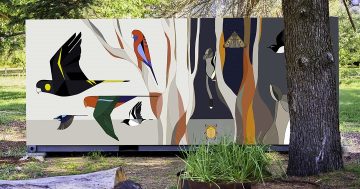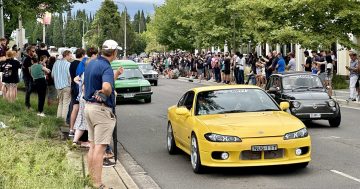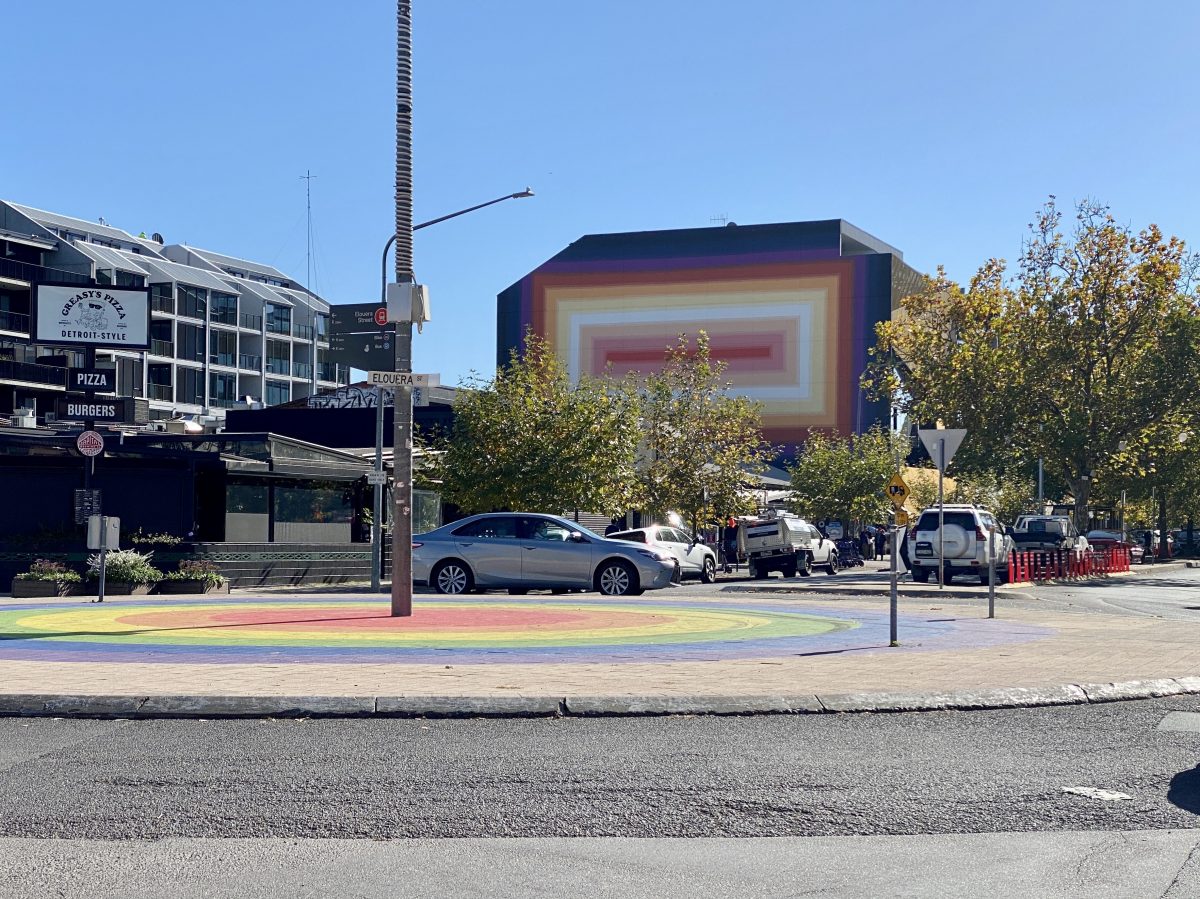
The ‘rainbow roundabout’ on Lonsdale Street, Braddon. Photo: James Coleman.
No long-time local needs to be told it’s nigh impossible to find a car park in Braddon.
So when the City Renewal Authority (CRA) sets to work on an “exciting milestone” for the inner-north suburb – designed to “encourage more people to enjoy Braddon’s array of retail shops, cafes, bars and restaurants” – you might be hoping the days of circling Lonsdale Street in your car waiting to pounce on an empty spot are finally numbered.
They’re not.
There will actually be up to 25 fewer car spaces along the main road when construction wraps up in late 2024.
Local businesses have previously described this attempt to curb cars as a “death blow”.
“Without convenient parking, customers will head elsewhere and desert our boutique small businesses for large franchises in the malls with multistorey parking,” Kel Watt from Braddon’s United Retailers and Traders (BURT) told Region in 2022.
But the forecast is decidedly less dire for local community group, The Braddon Collective. They’re all for fewer cars.
Spokespeople Susan Davidson and Nick Seefried essentially get around town either on foot or on bicycle and say the changes are years overdue.
“When my kids were younger, I would never let them walk through here unaccompanied and my youngest is now 25,” Susan says.
“We’ve had traffic problems for a very long time.”
As Braddon fills in with more and more apartments, more and more people are taking to the streets on foot, on bikes, on e-scooters, and with prams and wheelchairs. Throw in cars and it’s a risky mix.
“At the moment, there are no pedestrian crossings in Braddon, so people have to cross at the roundabouts,” Susan says.
“This is very dangerous, especially for older people, parents with prams and children.”
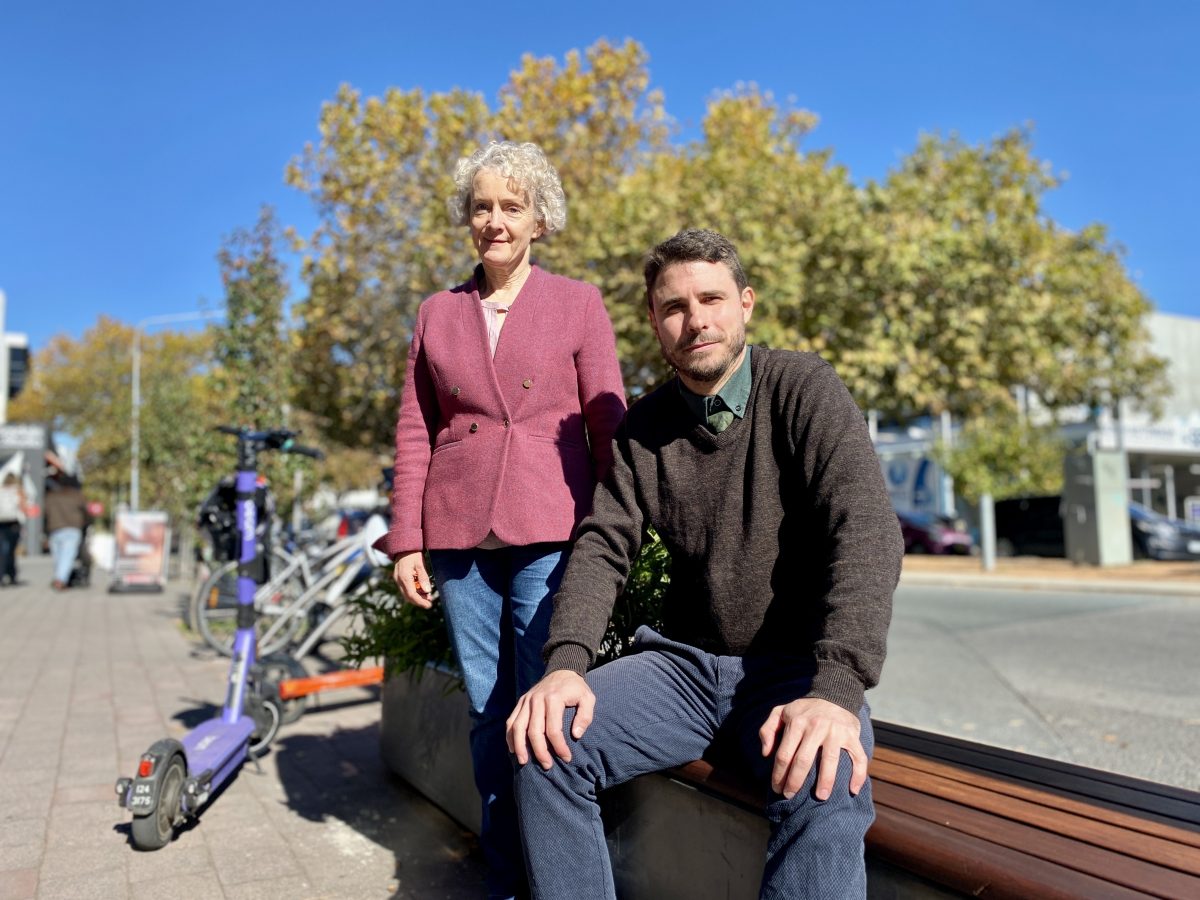
Susan Davidson and Nick Seefried from The Braddon Collective. Photo: James Coleman.
Over the next year and a half, the local government will pour about $4 million into upgrading the intersections at either end of Lonsdale Street with landscaped pedestrian crossings. All the footpaths in between will be widened and given new paving, improved lighting, more bike racks, bins, garden beds and urban art. The car parks in the central median strip will also be swapped out for garden beds and bench seats.
Even though the 40 km/h speed limit will remain, the change in focus is clear.
“This is the shopping centre model,” Nick explains.
“Make spaces where people are not the lowest transport priority on the pyramid.”
Although they’ve received mixed reactions, Susan and Nick aren’t worried about the flow-on effects fewer car parks will have on business.
“Foot traffic is actually what brings people to your business – not necessarily being able to park right outside,” Susan says.
It’s also why they don’t see another multistorey car park as the answer to complement the Canberra Centre’s.
“This is a residential area so we prefer it didn’t take that route,” Nick says.
“We prefer the government set about trying to balance how people get here rather than building for what they have. Currently, the car is king here, but we have to start increasing the share of other forms of transport – walking and cycling.”

Design sketches for the future of Lonsdale Street reveal fewer car parks and more pedestrian crossings. Photo: ACT Government.
Build for active travellers and the active travellers will come is the general philosophy. It’s also why residents would ideally like upgrades to go further – into Mort Street and Elouera Street – and include amenities like a public toilet block and a proper playground in Haig Park.
“The whole of Braddon needs looking at, to be honest,” Susan says.
“It has the second highest density of all the Canberra suburbs, and it’s only getting more and more dense.”
Nick expects there will still be enough parking in the area to cater for those who can’t find other ways into Braddon, and even regular events like the Summernats Fringe Festival, when hundreds of cars descend on Lonsdale Street every January for a ‘show and shine’ event.
“Braddon is a place of pilgrimage for Summernats fans and we love it,” he says.
“The Fringe Festival may expand and move up the other streets, but if anything, the upgrades will make the owners cruise a bit slower so people can actually take a good look at all the hard effort they’ve put into their cars.”
But until light rail reaches Tuggeranong, or bus connections between the outer suburbs and the city improve, Susan says there will be “growing pains”.
“We’re transitioning from a big country town to a city, and there are always growing pains when that happens,” she says.
“But it will happen and people will adapt. Every Canberra town centre is experiencing this. We need to think of long-term solutions.”












